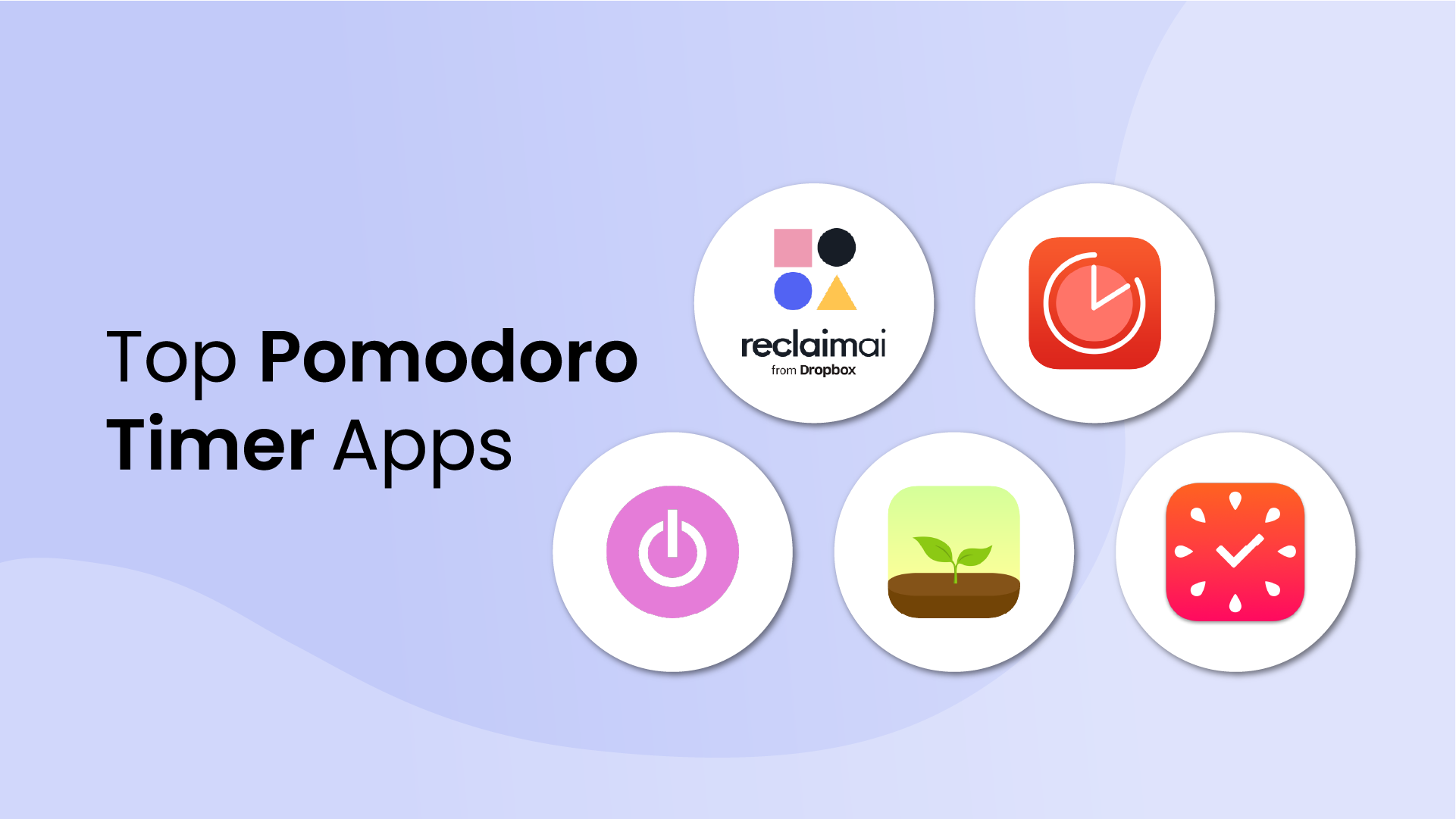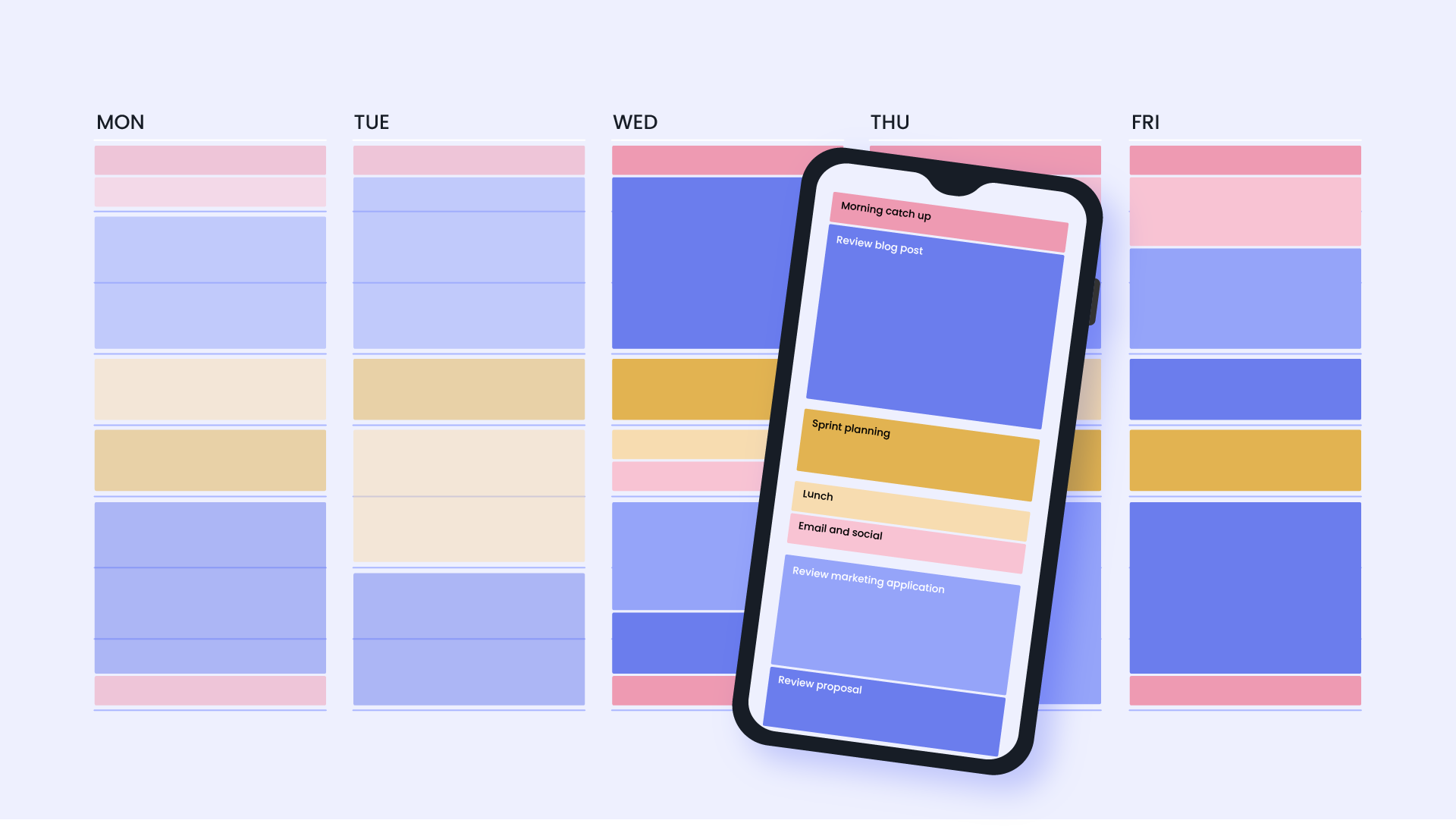It’s all too easy to coast along in our professional lives. You start your day, get your work done (or at least try to), wrap up and head home. Only to start that whole process over the next day. But only focusing on today's urgent work isn’t a recipe for a fulfilling career. Work is such a significant portion of our time. An estimated third of our lives are spent in our jobs. And to spend this time meaningfully, you’ll need to set (and achieve) professional goals that take you beyond today.
What are some examples of professional goals you can set to make the most out of your work-life?
Don’t worry, I won’t leave you hanging. See for yourself 👇
What are professional goals?
Professional goals are the concrete outcomes you want to make happen at work. Things like tangible wins, new skills, fresh credentials, bigger roles, visible impact. In other words, they are the actionable targets you set your sights on throughout your career.
Now, let’s clear up the usual confusion:
- Career aspirations are your long-term ambitions. Your “someday” picture, like becoming a senior manager or a go-to industry expert. Inspiring, yes, but often fuzzy on the near-term steps.
- Personal goals, of course, live outside the office. Run a marathon, learn guitar, finally nail your sourdough starter. They’re good for your sanity and sense of personal fulfillment, but they don’t always push your career forward.
- Professional goals sit in the middle. They’re your stepping stones which take those big career aspirations and break them up into near-term, job-relevant results you can track and talk through with your manager.
Why do professional goals matter?
Work is a lot like life: messy. And in order to move ahead in your work goals, you need to articulate where you want to be to grow in that direction. Here's how they help you:
- Create clarity & focus: You define what success looks like and prioritize time on the outcomes that matter most (with a few key metrics to prove progress).
- Fuel motivation & accountability: Specific targets plus a simple progress ritual (weekly check-in, quick update) keep momentum and make gaps visible early.
- Accelerate skill growth: Stretch goals push new skills and experiences, building range and adaptability.
- Drive career momentum: Visible, measurable wins make it easier to show impact in reviews and earn promotions or new opportunities.
- Align you with the business: When your goals ladder into team/company OKRs, coordination tightens, ownership is clear, and delivery becomes more predictable.
- Boost engagement and ownership: Clear expectations and shared goals raise engagement and give you greater control over results.
- Reinforce values & fulfillment: Goals tied to your core values sustain energy and make progress feel meaningful.
Top 43 professional goals examples
Here’s a gallery of example professional goals. Pick a few that fit your season, or change them up at your discretion. These are examples are inspiration to get you started.
1. Master time blocking & prioritization
Reserve dedicated calendar slots for your most important tasks each day using time blocking. Picking a small daily “Top 3” keeps you focused and reduces the mental clutter from context switching. You’ll actually finish complex projects and see real progress.
2. Communicate with clarity & brevity
Lead with the takeaway, then add context. Clear, concise communication means fewer misunderstandings and faster decisions.
3. Build a weekly planning & review ritual
On one page, plan the week from your goals, not your inbox. End Friday with a quick retro: what worked, what didn’t, what to change. Little improvements add up quickly.
4. Manage stakeholders (including managing up)
Map who cares, what they need, and how they like to receive updates. Align early on goals, risks, and trade‑offs, and keep a steady cadence of communication. Managing up well gives you air cover and unblocks decisions.
5. Improve meeting effectiveness
Every meeting needs a purpose, an agenda, and a decision. Default to async when a doc will do; when you meet, end with owners and dates. Fewer, tighter meetings return hours to actual work.
6. Develop your feedback muscle
Make feedback normal, specific, and timely. Give it, ask for it, act on it. Use simple frames (Situation–Behavior–Impact, along with a next step) to make it land. Teams that trade feedback improve faster and trust each other more.
7. Increase focus capacity
Deep work is a skill. Build it with protected blocks, notification boundaries, and batching shallow tasks. Measure weekly deep‑work hours and the meaningful deliverables they produce.
8. Document your work
Capture decisions, checklists, and SOPs where people can find them. Documentation reduces rework, preserves context, and speeds onboarding. Future‑you (and your team) will thank you.
9. Grow cross‑functional collaboration
Build relationships across teams before you need them. Share definitions, co‑own goals, and agree on handoffs to reduce friction. Cross‑team wins solve bigger problems with fewer delays.
10. Enhance problem framing
Define the real problem, constraints, and success criteria before jumping to solutions. Good framing prevents thrash and directs effort to what matters. Better problems invite better answers.
11. Practice data‑informed decisions
Instrument a few key metrics important to your work, and review at them on a regular schedule. Let data sharpen judgment and turn opinions into testable bets. Decisions improve when evidence has a seat at the table.
12. Adopt an automation mindset
Notice repeatable tasks and remove them with templates, scripts, or AI helpers. Small automations add up to real time saved and fewer errors. Free hours become deep‑work fuel.
13. Strengthen project management basics
Scope clearly, assign owners, surface risks early, and set a check‑in cadence. Keep a visible tracker so status isn’t a mystery. Predictability is a professional superpower.
14. Develop presentation skills
Design for the audience: one clear story, one clear ask. Use visuals for signal, not decoration, and rehearse once more than you think you need. Presentations that move people change outcomes.
15. Improve writing clarity
Write memos people can skim: headline the point, use short paragraphs, and prefer concrete examples. Clear writing creates shared understanding and speeds execution. Editing is where clarity appears, so leave time for it.
16. Expand domain expertise
Learn your industry’s mechanics, your customers’ jobs‑to‑be‑done, and your product’s constraints. Shadow adjacent teams to see how work really flows. Decisions get smarter when they’re grounded in the domain.
17. Cultivate strategic thinking
Connect daily tasks to company goals and pick the few levers that matter most. Say yes to high‑leverage work and park the rest. Strategy is focus applied over time.
18. Negotiate effectively
Prepare interests, options, and walk‑away points; trade, don’t concede. Aim for outcomes that work on both sides so deals stick. Calm, curious negotiators create more value.
19. Resolve conflict constructively
Address issues early with curiosity and facts. Name the impact, seek shared goals, and co‑design next steps. Healthy conflict preserves relationships and momentum.
20. Mentor & be mentored
Set learning goals for both roles and meet on a cadence. Share playbooks, not just opinions, and apply lessons on real work. Mentorship accelerates growth in both directions.
21. Lead without the title
Own outcomes, create alignment, and coordinate people toward a result. Influence grows when you consistently make the work better. Credibility follows impact.
22. Increase adaptability
Plan in pencil and update quickly when the world shifts. Treat changes as information, not failure, and keep moving. Adaptable people stay valuable in any market.
23. Build resilience
Protect sleep, movement, and recovery like performance inputs. Use reflection to separate signal from noise after tough weeks. Resilience turns setbacks into speed bumps, not dead ends.
24. Champion inclusion
Invite diverse perspectives early, design for access, and notice who’s missing from the room. Shared norms and inclusive rituals raise the quality of decisions. Belonging is productive.
25. Uphold ethics & integrity
Set clear standards, be transparent about trade‑offs, and raise concerns when something feels off. Trust takes years to build and minutes to lose. Your reputation is part of your resume.
26. Deepen customer focus
Talk to users, watch sessions, and walk the process end to end. Translate what you learn into sharper requirements and better experiences. Customer understanding is an edge in every role.
27. Improve operational excellence
Standardize repeatable work, remove waste, and make handoffs crisp. Measure throughput and quality so you can see improvements. Great operations make everything else easier.
28. Build business acumen (financials, value drivers)
Learn how your organization makes money, what drives costs, and which metrics matter. Link your work to revenue, margin, or risk reduction so priorities make sense. Better business judgment leads to better choices.
29. Grow technology fluency
Keep tools current, learn prompt patterns, and automate boring work. Technology multiplies output when you pair it with good judgment. Stay curious and you’ll stay marketable.
30. Build personal brand & network
Share useful work, help others without keeping score, and keep relationships warm. Opportunities often travel through people, not job boards. A good reputation opens doors you didn’t know existed.
31. Create an experimentation habit
Turn debates into tests with clear hypotheses and success metrics. Ship small, learn fast, and document results. A culture of experiments compounds learning.
32. Raise accountability
Make clear commitments, publish progress, and own the gaps. When things slip, adjust the plan and communicate early. Reliability builds trust and autonomy.
33. Protect energy & well‑being
Use sustainable work hours, real breaks, and boundaries around notifications. Energy management beats heroics. Consistency wins seasons, not just sprints.
34. Craft your career narrative
Know your strengths, your signature results, and the direction you’re heading. Keep a live brag doc, refresh your portfolio, and practice your story. When chances appear, you’re ready.
35. Build emotional intelligence (EQ)
Grow self‑awareness, self‑management, empathy, and relationship skills. EQ improves collaboration, leadership, and the quality of tough conversations. People remember how you make them feel—and that shapes results.
36. Improve public speaking skills
Set a goal to deliver a presentation, join a public speaking club, or practice speaking in front of groups. Public speaking boosts confidence, leadership, and communication abilities.
37. Acquire a new skill
Identify a new skill relevant to your role or industry –such as learning a programming language or mastering a new process—and set a plan to develop it.
38. Learn to use new tools or technologies
Stay competitive by adopting new tools or technologies in your field. Set a goal to become proficient with a specific tool that’s gaining traction in your industry.
39. Seek out learning opportunities
Attend workshops, seminars, or online courses to enhance your collaboration and conflict management skills. Proactively look for learning opportunities that align with your growth areas.
40. Collaborate with or shadow a different department
Broaden your experience by working with or shadowing a different department. This cross-departmental exposure can spark new ideas and support career advancement.
41. Engage with industry leaders
Follow, connect with, or learn from industry leaders to stay informed about the latest trends and best practices. Engaging with their content can provide valuable insights and inspiration.
42. Pursue a master's degree
Consider pursuing a master's degree to advance your career, gain higher credentials, and open up new job opportunities. Many professionals find the process transformative and fulfilling.
43. Establish clear boundaries between work & personal life
Set clear boundaries to separate work from personal time. This supports well-being, prevents burnout, and helps maintain a healthy work-life balance.
What professional goals should you set?
"Okay, I get that," you might be thinking to yourself. I see how professional goals are great and necessary and all, but what should those goals even be?
This is a tough question, but one you'll have to think about yourself. We recommend taking the time to reflect on your personal values, interests, and strengths to chart a course toward a fulfilling career.
- What truly motivates you at work?
- What kind of impact do you want to make?
Self-reflection is just one piece of the puzzle though. You can find a lot of inspiration through connecting with your peers and colleagues. In other words, building a strong professional network is equally important. Connecting with industry professionals and attending industry events can open your eyes to new career opportunities and provide valuable insights into different career paths. These experiences not only expand your professional network but also help you stay focused and inspired as you pursue your career aspirations.
At the end of the day, each of our individual career journeys are unique. Professional goal-setting might feel difficult and overwhelming, but we promise it's worth it. With a solid set of professional goals, you’ll be better equipped to make informed decisions and stay on the right path toward career advancement and a fulfilling professional life.
How to write professional goals that stick
Writing goals is easy. After all, you literally make them up: you can write anything you want down. But writing professional goals that actually shape your work and survive beyond the kickoff meeting isn’t as easy as putting pen to paper. Too often, people set goals that are vague or easily abandoned when a shift in priorities comes along.
Effective goal-setting is a system. A system defined by clarity and adaptability while tying the ultimate outcome to something you can measure. Let’s take a closer look:
1. Start from outcomes, then pick the few measures that prove them
Professional goals typically fall short for many people because they’re too wrapped up in the nitty-gritty of activities necessary to achieve them and less so in the outcome they want. You can outline dozens of tasks, but unless they tie back to a meaningful change, they won’t really matter. The better approach is to begin with the outcome and then start delineating all the tasks necessary to get there afterward.
Having a clear picture of where you want to end up will also make it easy to choose some metrics that can prove your progress. With these metrics and destination in mind, your focus shifts from “what we’re doing” to “what difference it makes.” That’s the foundation of any strong goal system that holds up over time.
2. Choose the right container: SMART vs. OKR
If you’ve ever had to set professional goals for your job, you’ll likely be familiar with what I’m about to tell you. And that is, you should fit your goal into one of two containers: SMART or OKRs. Of course, these aren’t the only goal-setting frameworks out there. But, they are some of the most popular and effective when it comes to work-related goals.
- SMART: A framework for writing a single, specific goal that’s specific, measurable, achievable, relevant, and time-bound.
- OKRs: A framework for setting a broad Objective (the outcome you want) supported by Key Results (the measurable evidence you’ve achieved it).
If you’ve got a single, well-scoped outcome that’s yours to own, SMART keeps it tight and measurable. If you’re driving a broader theme that requires multiple results across teams, OKRs provide structure and visibility. For personal focus or a clear project milestone, SMART usually gets you moving faster.
You can also mix them. Set a team OKR for the shared outcome, then write a SMART goal for the key result that’s on your plate.
3. Keep the set small & visible
Learning to prioritize tasks is necessary for making steady progress toward your professional goals and maintaining work-life balance. So, with that said, a small, visible set of career goals is easier to act on and harder to ignore. When the list is short, you can actually scan it each week and notice what’s moving. When it’s visible, teammates see the same priorities you do and can point out gaps or misalignments early.
4. Make the target specific & hard (but doable)
If you’re setting professional goals, then you undoubtedly want to grow and improve in your career. Self-improvement and growth will require pushing yourself beyond your comfort zone, beyond your limits. That’s where your potential lives, just outside your limits.
Aim for a target you’re confident you can hit about 60–80% of the time. Ambitious enough to stretch, but grounded enough to execute. Focusing on developing specific skills as part of your goal makes your objectives more actionable and measurable.
5. Lock in a baseline, a target, and a time box
A goal without a clear starting point or deadline is wishful thinking. You must lock in a baseline (where you are now), define a numeric target (where you intend to go), and time-box it (by when you’ll judge success).
Capturing a baseline forces you to confront reality: it gives you an anchor for measurement and highlights the gap you must close in regards to your professional development. Evaluating your current skill set honestly is what really matters most here, as it helps you identify specific areas for improvement and set realistic targets.
And these targets force you to make trade-offs: you can’t aim at “improve,” you must pick “from 18% to 24%.” And the deadline guarantees focus: “by October 31” turns on some of the pressure to keep you going.
So, to put it all in one sentence, a solid professional goal could look like this:
“Raise trial → paid conversion from 18 % to 24 % by October 31.”
When you do this, you eliminate wiggle room. Progress on your goal (or lack thereof) becomes unambiguous. With all this being said, this step is potentially a bit redundant – if you follow our advice from step 2, you’d already be doing this kind of specification.
6. Use WOOP to remove friction
Nothing ever goes according to plan. To be frank, you could follow all the previous steps here and still run into obstacles. No, you haven't messed up or need to go back and re-evaluate your whole framework. Obstacles along the way are inevitable, no matter how well-written your goal.
All you need is a little WOOP. No, not the fitness tracker 🙄. WOOP! That is, Wish, Outcome, Obstacle, Plan.
WOOP is a framework specifically designed to help you clear roadblocks before they derail your goals. Name the wish and the outcome you want (we’ve done this already), then think about the most likely obstacles and script the if–then moves you’ll make if/when they show up.
It looks something like this: Wish → Outcome → Obstacle → Plan (“If [obstacle], then I will [specific action].”)
So, for example: Publish the Q4 adoption report → PMs use it in planning → ad-hoc requests break my focus → If a request lands during my report block, then I’ll log it and reply after 3 p.m.
7. Design a progress ritual you can actually keep
Depending upon the particular nature of your goal, you could be at it for quite some time. Maybe not, but something like “land a promotion in the next 18 months” might involve quite a lot of time and effort, as you can imagine.
When we work towards our goals (professional or otherwise), our enthusiasm and efforts follow something like an inverse bell curve. We’re really hyped up and ready to go at the start, but our efforts might start to lull as we work our way through the trenches.

That’s a bit of a deep valley ☝️, but your professional goals don’t need to stumble there. The best way to avoid these valleys in the first place is by measuring (and celebrating) the progress you make along the way. And the way you should do that is with a progress ritual of sorts. A progress ritual is a lightweight, repeatable check-in you run on a fixed cadence to keep a goal alive in day-to-day work.
Make the ritual easy to keep. Fifteen minutes, same day, same owner. Capture the latest result, decide the next move, and carry one learning forward. Celebrate progress you can point to, not just the effort you put in. Setting aside personal time for regular goal review can help you stay accountable and make consistent progress. Over weeks, that steady loop flattens the valley and gets you to the finish line.
8. Align with the people who unblock you
Sometimes, the success or failure of our professional goals might also depend on other people. And, if that’s the case, you’ll want to align with the people who are necessary to unblock any progress.
Goals move faster when these colleagues know exactly what you need and when you need it. Alignment means making dependencies explicit: who owns what, the lead times involved, the decision rights, and the trade-offs you’re willing to make. Then, agree on a check-in rhythm so surprises surface early. Put it in one shared place and treat it like a contract: clear asks, clear dates, clear owners.
Say what you’re trying to ship, who you need, and by when. Call out the risks you can see, what you’ll do if they happen, and how you’ll escalate if a date slips. Put it all in one shared note so no one has to guess. Exchanging constructive criticism and constructive feedback with colleagues during this process will keep everyone growing and aligned toward your shared goals.
Common pitfalls of professional goal setting
Even good frameworks wobble when the goal itself is shaky. Let’s explore some common pitfalls that can sabotage your efforts and how you can sidestep them.
1. Setting too many goals
Don't bite off more than you can chew. When you set too many goals, your attention becomes fragmented, making it hard to gain meaningful momentum. Narrow your focus to a few key priorities. For example, rather than "tackling 11 priorities across growth, retention, and platform," pick three key initiatives for the quarter.
An example might be: “Ship three onboarding fixes to boost trial-to-paid conversion from 18% to 21% by June 30, while holding the rest in your backlog.”
2. Using vague action words
Vague verbs like "improve" or "optimize" might sound impressive, but they mask the specific actions needed. The way you write your professional goals should clearly define your approach. Commit to sending a clear, concise weekly update every Friday afternoon outlining your progress, potential risks, and upcoming tasks. Regularly ask stakeholders if these updates meet their needs, aiming for consistently positive feedback.
3. Focusing on outcomes outside your control
Now, our advice from earlier in the article did place an emphasis on the outcomes of your goals. However, there are a lot of outcomes out there that are outside of our control. Setting goals that rely heavily on factors beyond your direct influence can quickly drain motivation. Your professional goals should ultimately specify actions you can control.
4. Chasing vanity metrics
Vanity metrics like "500k page views" may look impressive on the surface but often don’t translate into meaningful business outcomes. Your professional goals should focus on metrics that drive actionable insights. A better goal would be: “Drive 1,000 free-to-paid activations from your launch content by August 31, tracking the visitor-to-trial-to-activation funnel weekly to stay on course.”
5. Misaligned timelines & unrealistic stretch goals
Ambitious goals without realistic checkpoints can lead to frustration and burnout. You want to stretch yourself, but you don't want to set your sights unrealistically high with a goal like "grow enterprise revenue 10× this quarter." Break down your ambitions into achievable milestones. Set a foundational objective first, such as closing three significant deals and assembling a well-trained team. Only once these foundational steps are achieved should you stretch towards larger goals like reaching $1.5M new enterprise ARR.
6. Overemphasis on one metric
Focusing too narrowly on a single metric can lead to corner-cutting and neglecting overall quality. Ideally, you want to balance efficiency with quality indicators like customer satisfaction (CSAT) and resolution rates. For example, aim to reduce call times to 3 minutes while maintaining a CSAT score of at least 4.6/5 and a first-contact resolution rate of 85% or higher. Running and reviewing regular experiments can help you achieve a well-rounded goal.
Move your career advancement forward with professional goals 💼
Goals don’t need to be grand to change your trajectory. Pick one outcome that matters this quarter, write it as a single sentence with a number and a date, add two measures that prove it, and choose the first move you can finish this week. Small, visible wins stack – then the big stuff starts to feel inevitable.
Want help turning those goals into time on your calendar? Reclaim.ai makes it easy to protect focus hours, auto‑schedule your priorities, and keep a steady weekly review rhythm. Create a goal, break it into tasks, and Reclaim will find the right slots, reshuffle when conflicts pop up, and show you where your time actually goes.



































